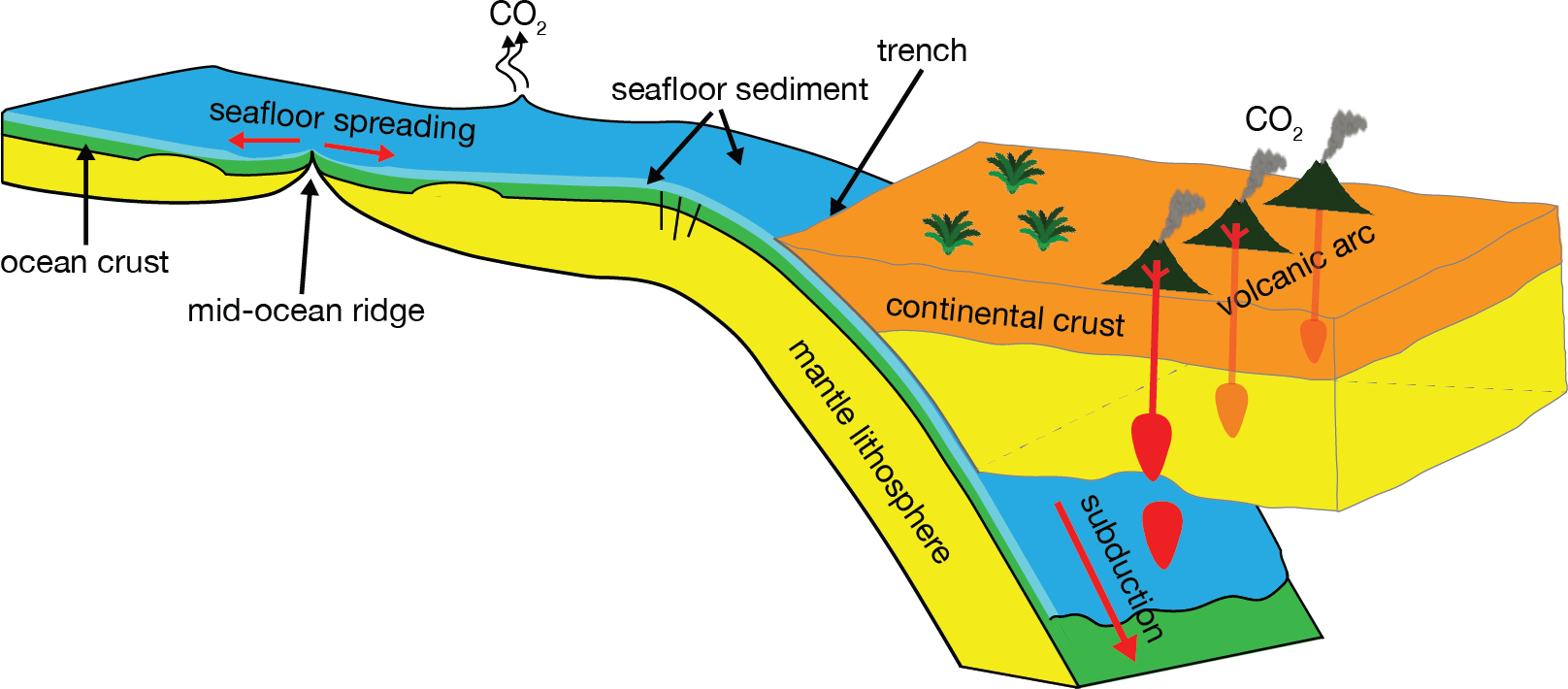This video shows plate motions, carbon storage within tectonic plates and carbon degassing along mid-ocean ridges and subduction zones through time. Our carbon model shows these processes alone cannot explain global cooling in the Cenozoic Era. The effects of rock erosion, not shown here, played a key role. Arrows indicate plate motion speed relative to the mantle. Note that tectonic carbon emissions in the Cretaceous period are dominated by mid-ocean ridges, while in the following Cenozoic Era, subduction zone volcanism plays an increasingly important role, driven by the recycling of deep-sea sediments on subducting plates. Video by Ben Mather.
Abstract. Concealed deep beneath the oceans is a carbon conveyor belt, propelled by plate tectonics. Our understanding of its modern functioning is underpinned by direct observations, but its variability through time has been poorly quantified. Here we reconstruct oceanic plate carbon reservoirs and track the fate of subducted carbon using thermodynamic modelling. In the Mesozoic era, 250 to 66 million years ago, plate tectonic processes had a pivotal role in driving climate change. Triassic–Jurassic period cooling correlates with a reduction in solid Earth outgassing, whereas Cretaceous period greenhouse conditions can be linked to a doubling in outgassing, driven by high-speed plate tectonics. The associated ‘carbon subduction superflux’ into the subcontinental mantle may have sparked North American diamond formation. In the Cenozoic era, continental collisions slowed seafloor spreading, reducing tectonically driven outgassing, while deep-sea carbonate sediments emerged as the Earth’s largest carbon sink. Subduction and devolatilization of this reservoir beneath volcanic arcs led to a Cenozoic increase in carbon outgassing, surpassing mid-ocean ridges as the dominant source of carbon emissions 20 million years ago. An increase in solid Earth carbon emissions during Cenozoic cooling requires an increase in continental silicate weathering flux to draw down atmospheric carbon dioxide, challenging previous views and providing boundary conditions for future carbon cycle models.
Müller, D., Mather, B., Dutkiewicz, A., Keller, T., Merdith, A., Gonzales, C.M., Gorczyk, W. and Zahirovic, S., 2022, Evolution of Earth’s tectonic carbon conveyor belt, Nature, 605, 629-639, https://doi.org/10.1038/s41586-022-04420-x.
SharedIt link: https://rdcu.be/cOjKj
Supplementary materials on zenodo: https://zenodo.org/record/5229175#.Yo7Z1pNBzu4
Supplementary spreadsheet data
In the media:
COSMOS: Tectonic plates were, until recently, the Earth’s major climate driver
EastMojo: How plate tectonics, mountains, seas have kept Earth’s ‘Goldilocks’ climate
NZ Evening Report: How plate tectonics, mountains and deep-sea sediments have maintained Earth’s ‘Goldilocks’ climate
![]()

